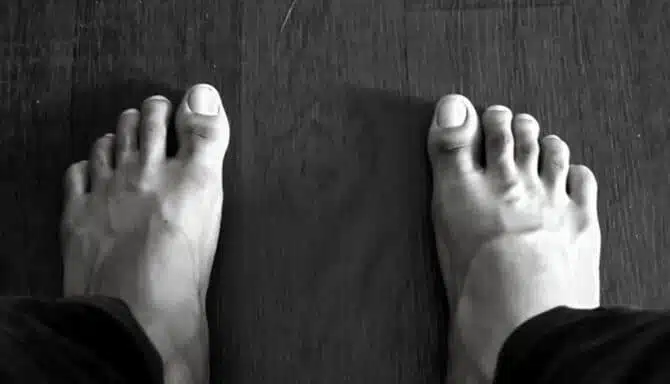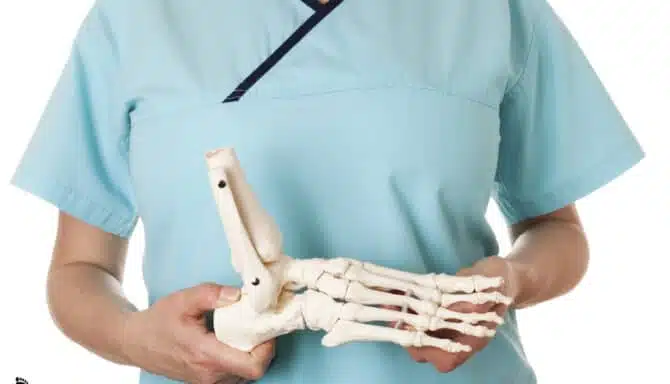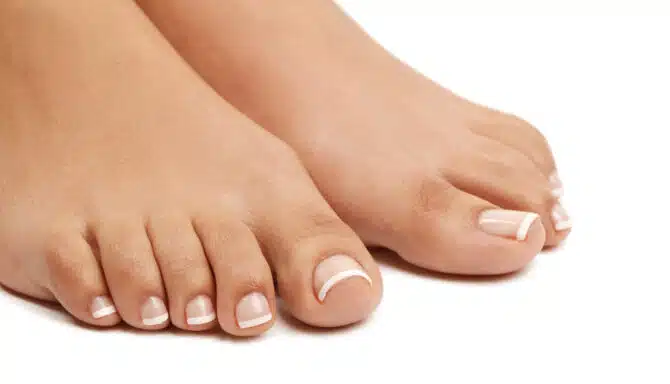As simple as it may seem, trimming and filing your toenails correctly is an important part of maintaining proper foot health. It can save you from pesky and rather painful nail problems, such as ingrown toenails, broken toenails, and toenail related infections.
What should your toenails look like after you have cut them? We’ll give you the lowdown on how to cut your toenails like a professional, straight from the experts at our Toronto foot clinic.
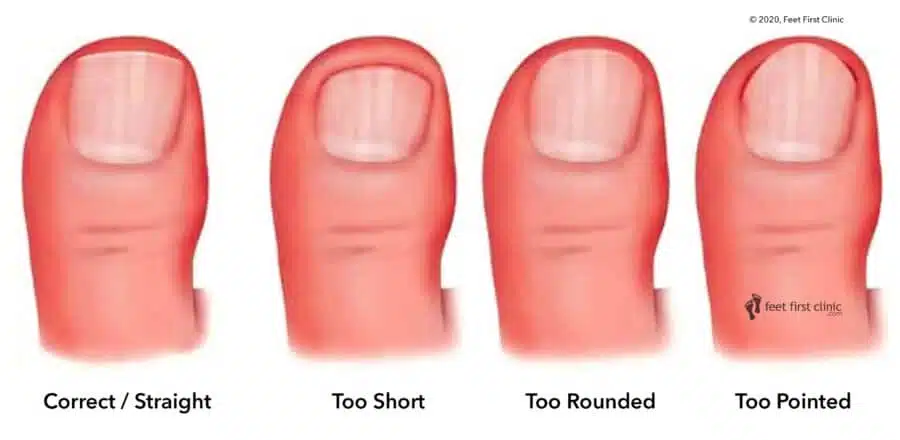
Leaving your toenails just past the skin line is better than cutting your nails under the skin line:
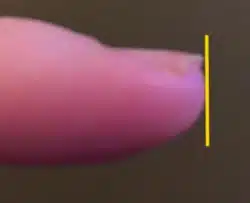
We do this for one main reason: We don’t want the skin to overlap the nail or wrap around it. This is usually seen at the end of the day when your feet are just a little bit more puffy
Toenails are more than just a nail
The lonely toenail gets a bad rap- from fungus toenails all the way through to ingrown toenails. But there is so much more about them:
- Toenails can show you illnesses when they might not be easily detected. Certain medical illnesses can show in toenails.
- They need blood to grow (from a bit of tissue about 0.5cm just past the cuticle). They like a balanced diet as some of those micro-nutrients also make up the nail structure
- Seasons and age influence growth. They grow quicker in adolescents and in warmer temperatures
- Highly likely, way back when, they were used for defence and for digging. But some research is also suggesting that toenails might be used for balance
So how do we do the best for our toenails? What are the best ways to cut toenails like a professional?
The 4 Do’s
See a Chiropodist if you have Diabetes, Can’t Bend or Poor Circulation (to name a few)
It is wise if you have conditions like poor circulation, poor nerves, Diabetes or just can’t get to your feet to have them checked by a Chiropodist. In this way the Chiropodist can assess your feet, give advice and do your nails for you. The main reason? To reduce the risk of infection or cuts.
Clean and dry
Too much dampness and the nail and skin become soft. They can then go into each other easily, which can cause problems. As long as you are having a regular bath/ shower, that is ample enough moisture for your feet. Depending on your job though, you might want to invest in wicking socks or breathable materials within shoes to reduce dampness to your feet.
Have the Right Tool(s) Available
To cut your toenails like a professional, you will need a pair of sharp nail clippers or professional nail nippers. Thickened nails? First make sure it is not a fungus, but if it is a normal thick nail then you can use a nail file. Go over your nails when they are nice and dry, about once a week. Now if your nails are thick to start you will need them professionally thinned down by a chiropodist. This is so you can use the nail file and clippers more effectively.
File Sharp or Jagged Edges
You might find that your nails have some sharp edges. If you want to cut your toenails like a professional, always file any sharp corners or jagged edges to ensure the nail edge is smooth. This is an important step. Sharp corners can catch on socks or even poke the surrounding skin. This also ensures you do not leave a nail spike behind to grow into the skin and cause a very painful ingrown toenail.
The 7 Don’ts
Wait Too Long Between Trimming Toenails
Although toenails do not grow as quickly as fingernails, they still need to be trimmed routinely. Cutting toenails is very dependent on the person. Some people’s toenails grow quick and others take a long time. Cutting too regularly (like weekly or monthly) can increase the risk of cutting the nails too short. On the flip side, keeping them long is not only uncomfortable in socks and closed-toe shoes, but it also increases the risk of the toenail breaking or cracking, which can then lead to infection.
Don’t push back those cuticles
Your cuticles are to stop any microorganism from getting under your skin from the point the nail grows out of the skin. If you push them back or trim them away you are then risking an infection around that area.
Clearing under the nail
Don’t clear underneath the nail bed. There is no need to. You can lift the nail and introduce fungus to the nail. The opaqueness of the nail is it lifting away from the nail bed. Leave it and it will reattach as it grows out, which might take a few grows depending on how much you have lifted the nail and for how long.
Rip, Peel, or Bite Your Toenails
Using your fingers or any other body part to “trim” your toenails is very unsafe (and unhygienic!). You have very little control when doing this. More often than not, the nail is left too short, jagged, and removed too deep.
Trim The Nails Too Short or Too Deep
The skin surrounding the nail should not be higher than the toenail as this may cause the nail to grow into the skin instead of on top of it. Rather, the nail should be cut to the edge of the skin and should not be cut deeper than that. Cutting the nails too short can also expose the nail bed underneath, making the area very tender.
Use Dirty Tools
Clean your tools regularly with rubbing alcohol or regularly replace them if they are disposable. Using tools that harbor germs and bacteria can be dangerous, especially if you accidentally nick your skin or have an ingrown toenail.
Don’t share footcare tools
Keep those tools to yourself and don’t share. Where possible it is also wise not to use the same clippers on your fingers that you use on your toes. If you have a fungal infection in your toenails, it can then easily spread to your finger nails.
If you suspect you have a toenail issue, do not wait to seek attention from a licensed chiropodist, especially if you have other medical conditions such as diabetes. A chiropodist will be able to assess the problem and explore the appropriate treatment options.


